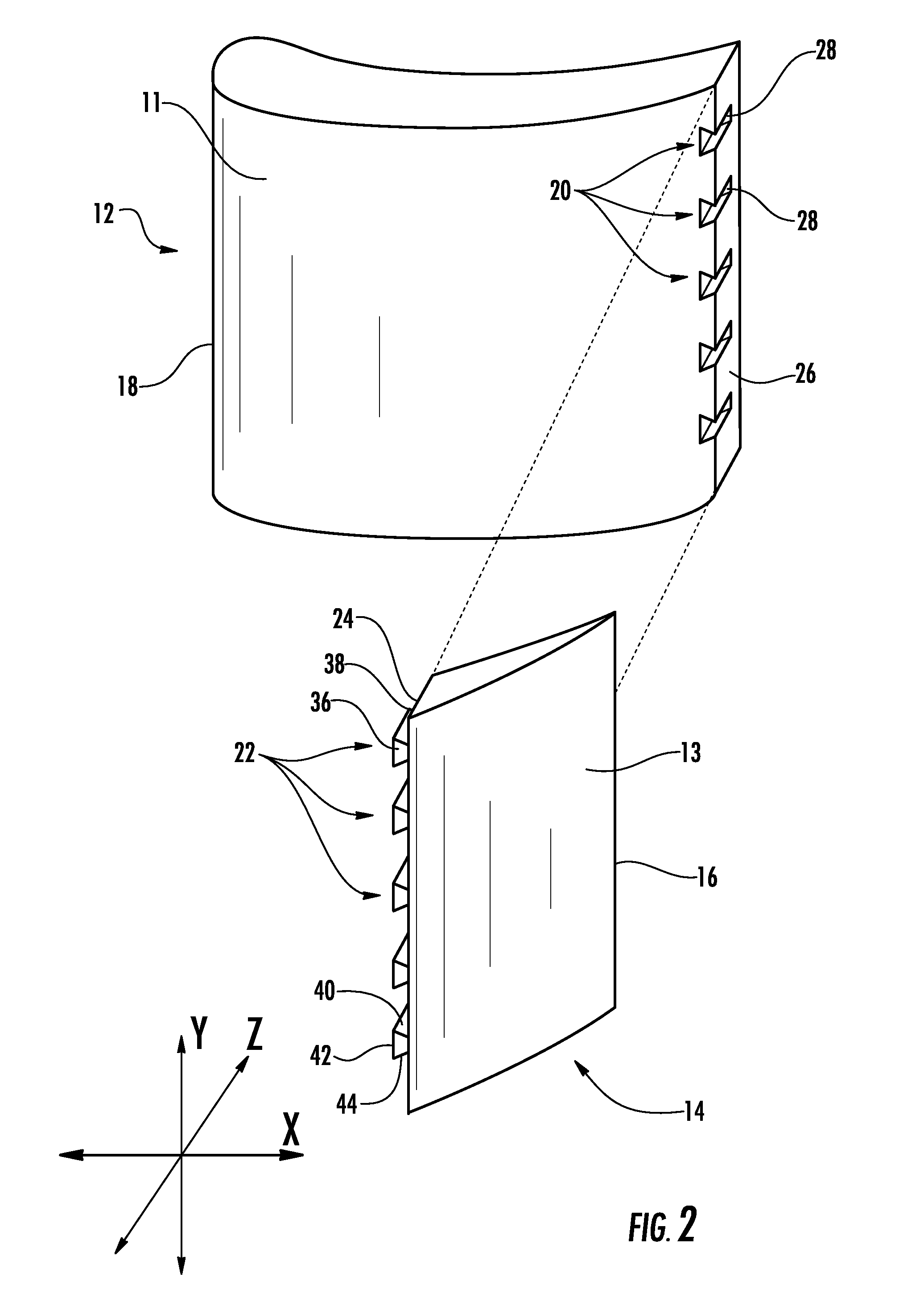Turbine component casting core with high resolution region
a technology of high resolution and casting core, which is applied in the field of casting cores for turbine engine components, can solve the problems of increasing the difficulty of manufacturing components, imposing limitations on core design, and difficult to separate dies, and achieves high resolution features
- Summary
- Abstract
- Description
- Claims
- Application Information
AI Technical Summary
Benefits of technology
Problems solved by technology
Method used
Image
Examples
Embodiment Construction
[0049]As shown in FIGS. 1-18, embodiments of the invention are directed to a casting core system with one or more high resolution regions for use in casting a turbine engine component. Aspects of the invention will be described in connection with a casting core for a turbine airfoil, but the detailed description is intended only as exemplary. Indeed, aspects of the invention can be used in connection with any hollow cast turbine engine component, especially those with complex internal features. Embodiments of the invention are shown in FIGS. 1-8, but the present invention is not limited to the illustrated structure or application.
[0050]Referring to FIG. 1, a casting core 10 according to aspects of the invention is shown. The casting core 10 can include a first region 11 and a second region 13. In one embodiment, the core 10 can be used in connection with the casting of a turbine blade or vane. In such case, the second region 13 can define an airfoil trailing edge portion 16 of the c...
PUM
| Property | Measurement | Unit |
|---|---|---|
| acute angles | aaaaa | aaaaa |
| angles | aaaaa | aaaaa |
| grain sizes | aaaaa | aaaaa |
Abstract
Description
Claims
Application Information
 Login to View More
Login to View More - R&D
- Intellectual Property
- Life Sciences
- Materials
- Tech Scout
- Unparalleled Data Quality
- Higher Quality Content
- 60% Fewer Hallucinations
Browse by: Latest US Patents, China's latest patents, Technical Efficacy Thesaurus, Application Domain, Technology Topic, Popular Technical Reports.
© 2025 PatSnap. All rights reserved.Legal|Privacy policy|Modern Slavery Act Transparency Statement|Sitemap|About US| Contact US: help@patsnap.com



